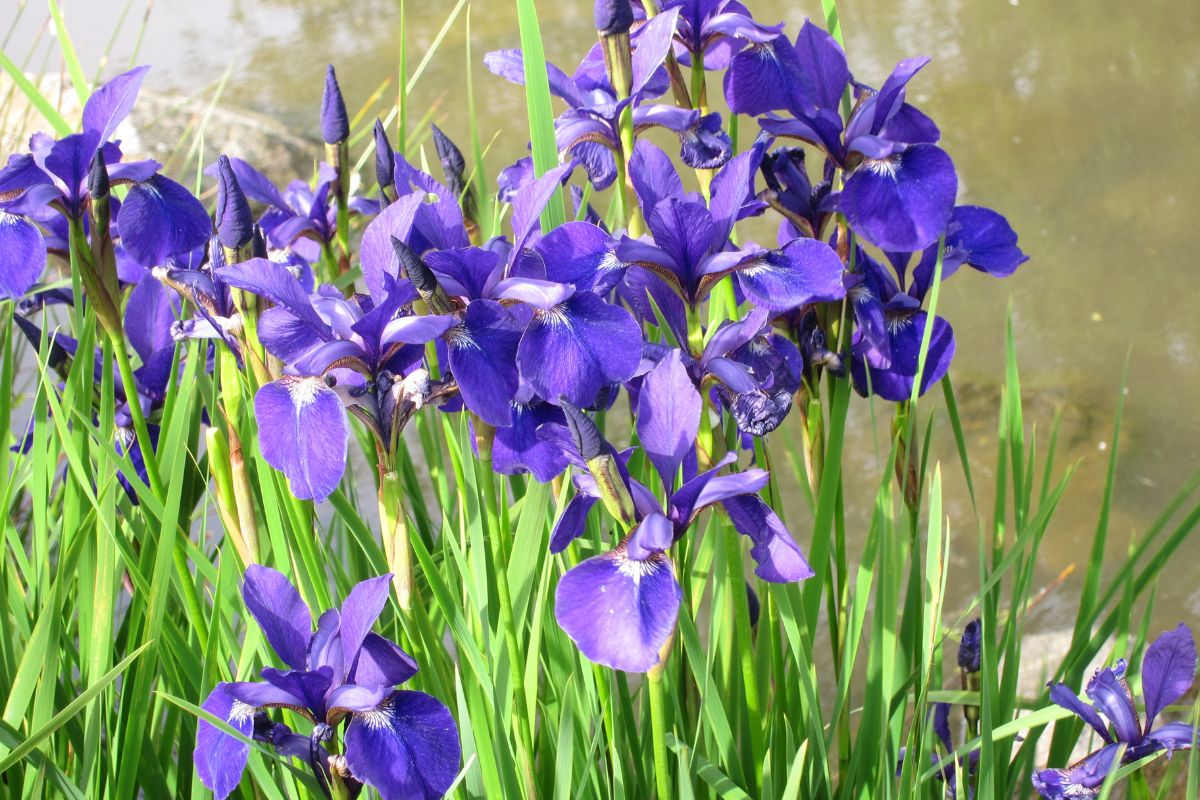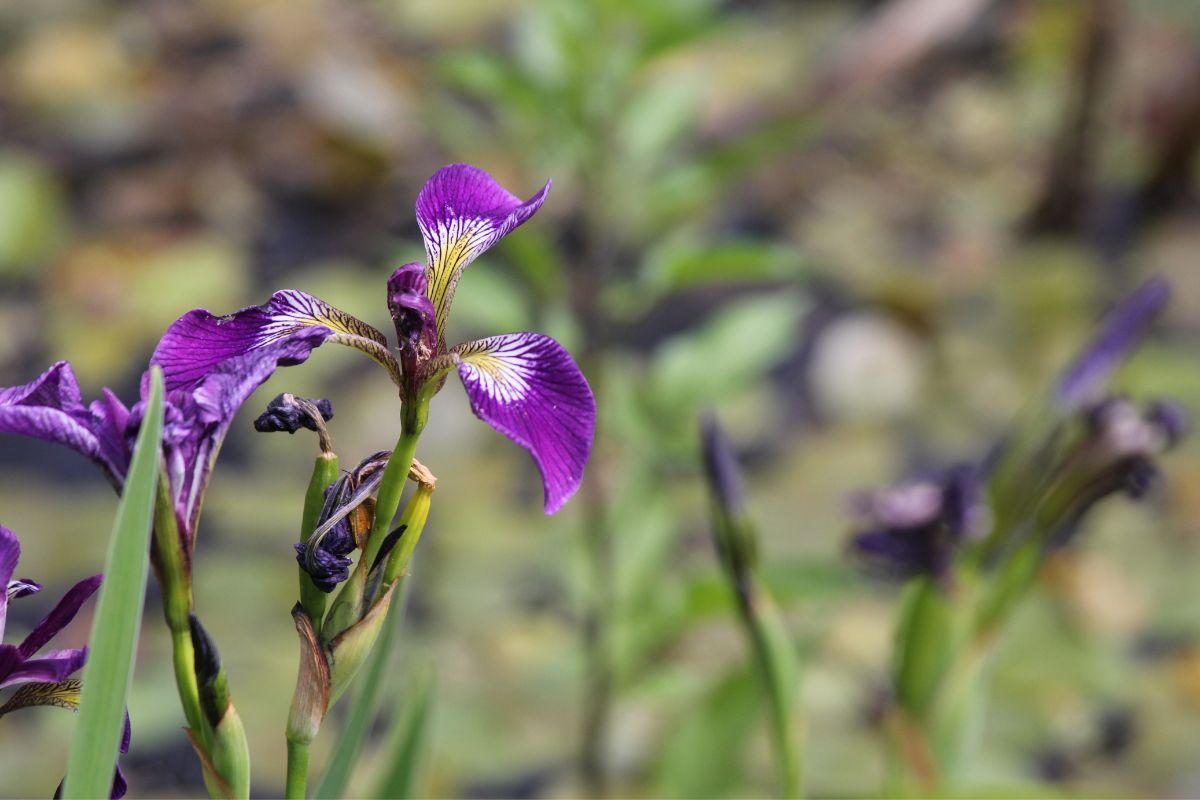Of all the garden flowers, the wild iris is one of the most popular, and looking at it, you can see why. One look at this flower will be enough to hold your attention for minutes.

It has large drooping leaves that are light purple and lavender at the tips before slowly fading into a yellow and orange pattern.
This is the perfect spring and summer flower that you need to lighten up your garden. It makes the perfect border around other types of flowers, or you can easily use it as the centerpiece.
They bloom very early in the season, so make sure you plant them during the early spring.
So, what else is so special about the wild iris? Where does it come from? How can you take care of it? Are there other variations of this plant? Are these perennial or annual plants?
Well, we have all the information that you will ever need on this plant, so let’s get stuck right in.
What Does A Wild Iris Look like?
This plant is very unique and stands out against all of the others. It has purple petals that droop down, with white striations down the center and a yellow hue towards the middle of the plant.
These are perennial plants, so you can expect them to bloom all year round. They have erect flowering stems with a flattened cross-section and sword-shaped leaves.
They usually have around 3 – 10 leaves overall, but some of the other species have been known to have around 2 – 10 leaves.
Irises can be furry and have small hairs growing from the base of their petals. This is to make the landing more appealing for insects that pollinate them during the summer season.
This plant has a very solid relationship with pollinating insects and has adapted itself to widespread propagation.
Where Can You Find The Wild Iris Plant?
This plant is typically found in the Northern hemisphere, usually in places like Asia, North America, and Europe.
You can find this plant in all different sorts of locations, including meadows, riverbanks, woodland, marshy bogs, and even desert land where there is very little moisture.
You can also find this one in rocky mountainous areas, especially in North American regions. Other breeds of this plant can be found in woodland glades, mossy bogs, and along grassy slopes.

Can You Cultivate Wild Irises In Your Home?
This is a very popular plant to have in your home and can be grown very easily in garden beds or smaller plant pots.
Numerous places specialize in growing irises, including the Presby Memorial Iris Gardens, the Giardino dell’Iris in Florence, and the Chelsea Flower Show in England.
This flower will traditionally bloom during the early spring, so the ideal time for planting is during the late Winter around January or early February. This plant will usually start to grow in February and March.
Irises that grow domestically are classified very differently from other types of irises. These are known as bulb irises or rhizome irises, with both having further subgroups.
There are many different species of iris, and each one will need very specific conditions in which to flourish.
How Can You Take Care Of A Wild Iris?
These plants are quite hardy and despite how delicate they look, are very low maintenance. This plant does not bloom well in the shade, so make sure that you give them lots of sunlight, especially after you have first planted them.
These plants grow well in soil that has plenty of moisture, as a lot of them usually grow on mossy riverbanks in the wild. You can plant them near an artificial pond or water feature, as the moisture in the air will help them to grow.
This plant does not do well in frost, so make sure you plant them later on in the winter when the frost season is over. If your plants do suffer with frost damage, prune away the part of the plant that is frozen and place it in a warmer climate until it regrows.
You should try and plant wild iris during the spring in clumps to ensure full propagation. Make sure that the soil you are growing them in is well-drained and slightly acidic.
You should try and fertilize this plant in the spring just after you have planted them so that it can grow to its full potential.
Conclusion
Wild irises are some of the most beautiful and riveting plants that you can find. If you are going to cultivate them in your home, make sure that you give them the best chance by planting them in soil that is well-drained but moist.
They grow quickly, so you will need to transfer them to a larger pot soon after planting.
- Interesting Flowers That Start With A - July 21, 2023
- Interesting Flowers Beginning With H - July 21, 2023
- 14 Fascinating Flowers That Begin With C - July 20, 2023
